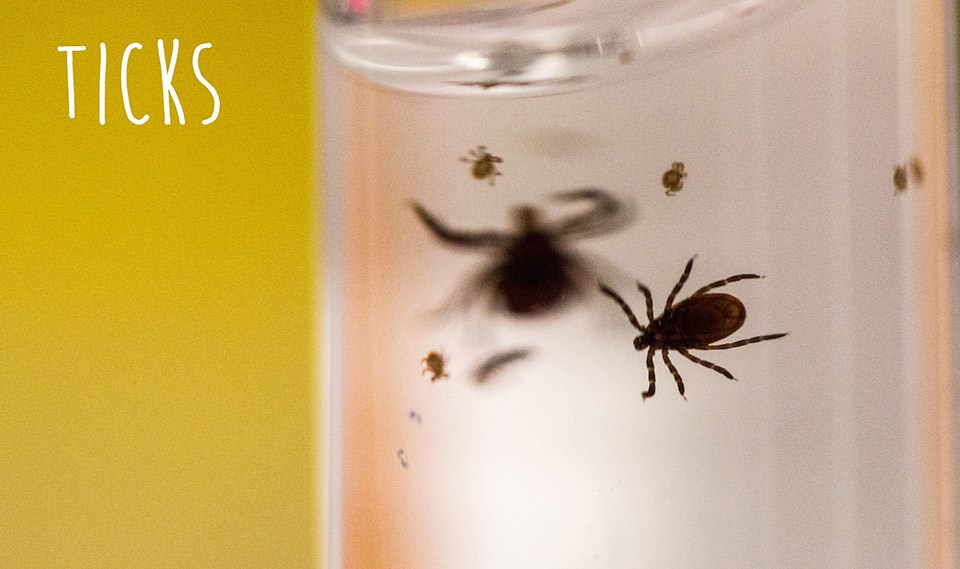Last updated: June 16, 2020
Article
#Sciencedeskdigs: Ticks

NPS Photo/M.Reed
What is it?
I keep these ticks on my desk as a way to talk to people about tick-borne diseases (such as Lyme disease), conservation, and prevention. I study infectious disease and I noticed how important it is to get a clear message out there that puts the disease in perspective and prevents both the spread of disease and the fear surrounding it. People feel empowered when they have information about a preventable disease and feel like they can actually do something about it rather than just worry about it. We need people to feel empowered because being in nature has so many positive health benefits that reduce our risk of the biggest killers—chronic diseases. Right now people’s fear of tick-borne diseases may be decreasing support for conservation even though data suggests a healthy, diverse ecosystem may actually help reduce the risk of many infectious diseases, including West Nile Virus, hantavirus, and tick-borne diseases.
I am trying to get the message out there that tick-borne diseases are preventable and treatable in order to lessen people’s fear and to increase support of conservation. That kind of messaging is a big part of what I do in the wildlife branch of the NPS. The concept that human, animal, and environmental health are all linked is called One Health and our practice is to protect natural resources and ecological processes in order to protect human and wildlife health.
Some of the easiest things to do to prevent getting a tick-borne disease when you go to a park is:
- always check yourself for ticks after being outside
- hike in the center of the trail
- shower within 2 hours of being outside
- use permethrin on your shoes
- and dry your clothes in the dryer for 10 minutes to kill any ticks
Messy!
